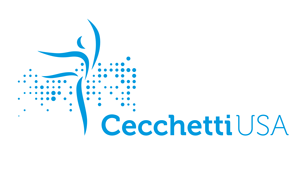CECCHETTI, THE STUDENT
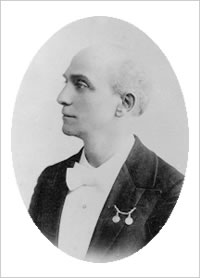 Enrico Cecchetti was born in a dressing room of a theatre in Rome on June 21, 1850. Young Enrico’s stage debut occurred as an infant in his father’s arms. Although his parents wanted a career in business or law for him, Enrico was determined to be a dancer and finally convinced his parents of his great desire and dedication. Trained in the rudiments of ballet by his father, Enrico was sent for further training to Giovanni Lepri, who prepared accomplished dancers. He also studied with two more of his father’s colleagues, Cesare Coppini, who taught at the prestigious La Scala in Milan, and Filippo Taglioni, father of the celebrated ballerina, Marie Taglioni. All of Cecchetti’s teachers had been trained by Carlo Blasis. This early training created a background for Enrico Cecchetti’s method of teaching, which followed the lines of Blasis’ own theory. Blasis had codified his teaching methods in the book Traite Elementaire, Technique et Practise de l’Art de la Danse, published in 1820.
Enrico Cecchetti was born in a dressing room of a theatre in Rome on June 21, 1850. Young Enrico’s stage debut occurred as an infant in his father’s arms. Although his parents wanted a career in business or law for him, Enrico was determined to be a dancer and finally convinced his parents of his great desire and dedication. Trained in the rudiments of ballet by his father, Enrico was sent for further training to Giovanni Lepri, who prepared accomplished dancers. He also studied with two more of his father’s colleagues, Cesare Coppini, who taught at the prestigious La Scala in Milan, and Filippo Taglioni, father of the celebrated ballerina, Marie Taglioni. All of Cecchetti’s teachers had been trained by Carlo Blasis. This early training created a background for Enrico Cecchetti’s method of teaching, which followed the lines of Blasis’ own theory. Blasis had codified his teaching methods in the book Traite Elementaire, Technique et Practise de l’Art de la Danse, published in 1820.
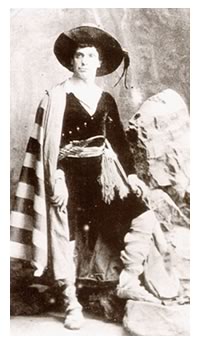 CECCHETTI, THE PROFESSIONAL DANCER
CECCHETTI, THE PROFESSIONAL DANCER
Cecchetti began touring Europe in his late teens and had his debut on the stage of La Scala in Milan at age 20. He was an instant success! Throughout his career, he received rave reviews and accolades and was considered the finest male dancer of his time. At the height of his career, he migrated to St. Petersburg. While performing in Russia, he captivated his audiences with brilliant feats of batterie, amazing leaps, and multiple pirouettes. He was hired to perform as Premier Danseur, to be Maitre de Ballet with the Maryinski Ballet, and to teach at the Imperial Ballet School (1887-1902). So prodigious was his technique and his gifts for mime that he created and performed the virtuoso role of the Blue Bird and the mime role of Carabosse in the premiere of Petipa’s The Sleeping Beauty in 1890.
CECCHETTI, THE TEACHER
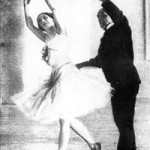 Cecchetti taught at the Imperial School in St. Petersburg from 1887-1902, and from 1902-1905 in Poland at the Warsaw State School. Returning to St. Petersburg in 1905, he established a school there. From 1907-1909, he coached Anna Pavlova exclusively until dancers from the Maryinsky pleaded with him to open his classes to them again. When Diaghilev wanted his company, the Ballets Russes, to tour, the dancers refused because they would miss their daily classes with Cecchetti. An astute businessman, Diaghilev hired Enrico for the dual roles of ballet master and mime. Cecchetti performed many mime roles which were created expressly for him by choreographers of the Ballets Russes. Cecchetti’s presence in the Diaghilev Ballets Russes was very important. He was the link between the past and the present, contributing to the birth of modern classical ballet. In addition to Cecchetti and the dancers, many other artists worked with the Diaghilev Ballets Russes: painters, set and costume designers Bakst, Picasso, Cocteau, and Matisse; composers Debussy, De Falla, Prokofiev, Ravel, and Stravinsky. The Ballets Russes toured through Europe, the United States, South America, and Australia. Tired of touring, Cecchetti settled in London, England where he opened a school to which dancers flocked. Considered the technical lodestar of the ballet world, it was said that no one could become a finished ballet dancer without passing through Cecchetti’s hands. In 1923, he returned to Italy to retire but was invited by Arturo Toscanini to resume his teaching career at La Scala, his lifelong dream. While teaching a class, Cecchetti collapsed and was taken home, where he died the following day, November 13, 1928.
Cecchetti taught at the Imperial School in St. Petersburg from 1887-1902, and from 1902-1905 in Poland at the Warsaw State School. Returning to St. Petersburg in 1905, he established a school there. From 1907-1909, he coached Anna Pavlova exclusively until dancers from the Maryinsky pleaded with him to open his classes to them again. When Diaghilev wanted his company, the Ballets Russes, to tour, the dancers refused because they would miss their daily classes with Cecchetti. An astute businessman, Diaghilev hired Enrico for the dual roles of ballet master and mime. Cecchetti performed many mime roles which were created expressly for him by choreographers of the Ballets Russes. Cecchetti’s presence in the Diaghilev Ballets Russes was very important. He was the link between the past and the present, contributing to the birth of modern classical ballet. In addition to Cecchetti and the dancers, many other artists worked with the Diaghilev Ballets Russes: painters, set and costume designers Bakst, Picasso, Cocteau, and Matisse; composers Debussy, De Falla, Prokofiev, Ravel, and Stravinsky. The Ballets Russes toured through Europe, the United States, South America, and Australia. Tired of touring, Cecchetti settled in London, England where he opened a school to which dancers flocked. Considered the technical lodestar of the ballet world, it was said that no one could become a finished ballet dancer without passing through Cecchetti’s hands. In 1923, he returned to Italy to retire but was invited by Arturo Toscanini to resume his teaching career at La Scala, his lifelong dream. While teaching a class, Cecchetti collapsed and was taken home, where he died the following day, November 13, 1928.
CECCHETTI, THE LEGACY
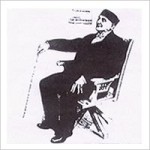 Maestro Enrico Cecchetti will always be remembered through the teaching method he developed which expanded upon the principles set forth by Carlo Blasis. He learned from the masters; he assimilated and applied the theories they taught. From his own experiences as a dancer and a teacher and from his associations with other dancers, artists, and musicians, he continued to learn, sharing his knowledge and wisdom throughout a career which spanned nearly eight decades. Cyril Beaumont, a world-renowned dance historian and friend of Cecchetti said, “What impressed me most about the Cecchetti method of teaching was the way in which each exercise played a definite and planned part in the student’s technical development. There is nothing haphazard about the system, nothing which depended on the teacher’s mood of the moment. There is a definite plan to daily classes.” The method devised by Maestro Cecchetti was recorded and published in 1922 by Cyril Beaumont with the help of ldzikowski and Cecchetti, himself. The Manual of Theory and Practice of Classical Theatrical Dancing (Cecchetti Method) is an excellent source of information on technique, stance, positions of arms, feet, legs, hands, body, head, port de bras, adages, etc. Margaret Craske and Fridericka Derra de Moroda later collaborated with Cyril Beaumont in recording many allegro enchainements and pirouettes. Having finished the manual on the Cecchetti Method, Beaumont decided it would be beneficial to bring together those dancers in London who had studied with Cecchetti. From this group was founded the Cecchetti Society in 1922. Its earliest members were Cyril Beaumont, Margaret Craske, Fridericka Derra de Moroda, Molly Lake, Jane Forrestier, Dame Marie Rambert, and Dame Ninette de Valois. Cecchetti and his wife were the first president and vice president of the Cecchetti Society. From this Society, branches have developed in all parts of the world. The legacy of the Cecchetti teachings has continued to grow. Among the many dancers influenced by Cecchetti were: Anna Pavlova; Vaslav Nijinsky; Tamara Karsavina; Dame Ninette de Valois and Dame Marie Rambert (Royal Ballet of England and Ballet Rambert, respectively); Gisella Caccialanza (New York City Ballet and San Francisco Ballet); Vincenzo Celli, Luigi Albertieri, Dame Alicia Markova, and Margaret Craske (Metropolitan Opera Ballet); Luba Egorova and Olga Preobrajenska (who taught in Paris); Serge Lifar (Paris Opera Ballet); Betty Oliphant (National Ballet of Canada); Molly Lake (Ankara Ballet of Turkey); Adolf Bolm (San Francisco Opera Ballet and Chicago Lyrical Ballet); Mikhail Mordkin (American Ballet Theatre); George Balanchine (New York City Ballet); Dame Peggy Van Praagh (Australian Ballet); Dulcie Howes (University of Cape Town, South Africa, also known as C.A.P.A.B. Ballet Co.). The list is endless and continues to grow without limit as each of these leaders in the international world of ballet shares elements of the Cecchetti method with their own students.
Maestro Enrico Cecchetti will always be remembered through the teaching method he developed which expanded upon the principles set forth by Carlo Blasis. He learned from the masters; he assimilated and applied the theories they taught. From his own experiences as a dancer and a teacher and from his associations with other dancers, artists, and musicians, he continued to learn, sharing his knowledge and wisdom throughout a career which spanned nearly eight decades. Cyril Beaumont, a world-renowned dance historian and friend of Cecchetti said, “What impressed me most about the Cecchetti method of teaching was the way in which each exercise played a definite and planned part in the student’s technical development. There is nothing haphazard about the system, nothing which depended on the teacher’s mood of the moment. There is a definite plan to daily classes.” The method devised by Maestro Cecchetti was recorded and published in 1922 by Cyril Beaumont with the help of ldzikowski and Cecchetti, himself. The Manual of Theory and Practice of Classical Theatrical Dancing (Cecchetti Method) is an excellent source of information on technique, stance, positions of arms, feet, legs, hands, body, head, port de bras, adages, etc. Margaret Craske and Fridericka Derra de Moroda later collaborated with Cyril Beaumont in recording many allegro enchainements and pirouettes. Having finished the manual on the Cecchetti Method, Beaumont decided it would be beneficial to bring together those dancers in London who had studied with Cecchetti. From this group was founded the Cecchetti Society in 1922. Its earliest members were Cyril Beaumont, Margaret Craske, Fridericka Derra de Moroda, Molly Lake, Jane Forrestier, Dame Marie Rambert, and Dame Ninette de Valois. Cecchetti and his wife were the first president and vice president of the Cecchetti Society. From this Society, branches have developed in all parts of the world. The legacy of the Cecchetti teachings has continued to grow. Among the many dancers influenced by Cecchetti were: Anna Pavlova; Vaslav Nijinsky; Tamara Karsavina; Dame Ninette de Valois and Dame Marie Rambert (Royal Ballet of England and Ballet Rambert, respectively); Gisella Caccialanza (New York City Ballet and San Francisco Ballet); Vincenzo Celli, Luigi Albertieri, Dame Alicia Markova, and Margaret Craske (Metropolitan Opera Ballet); Luba Egorova and Olga Preobrajenska (who taught in Paris); Serge Lifar (Paris Opera Ballet); Betty Oliphant (National Ballet of Canada); Molly Lake (Ankara Ballet of Turkey); Adolf Bolm (San Francisco Opera Ballet and Chicago Lyrical Ballet); Mikhail Mordkin (American Ballet Theatre); George Balanchine (New York City Ballet); Dame Peggy Van Praagh (Australian Ballet); Dulcie Howes (University of Cape Town, South Africa, also known as C.A.P.A.B. Ballet Co.). The list is endless and continues to grow without limit as each of these leaders in the international world of ballet shares elements of the Cecchetti method with their own students.
Cecchetti USA is proud to be continuing the dynamic ballet teaching tradition set forth by Maestro Enrico Cecchetti more than a century ago….
